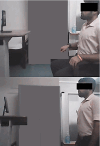Feasibility of a Tele-Assisted Home Exercise Program for Balance and Functional Mobility in Persons With Parkinson's Disease (TELEPORT-PD)
- PMID: 40519980
- PMCID: PMC12163220
- DOI: 10.1155/ijta/9936329
Feasibility of a Tele-Assisted Home Exercise Program for Balance and Functional Mobility in Persons With Parkinson's Disease (TELEPORT-PD)
Abstract
Introduction: Telerehabilitation can enhance delivery and acceptance of the home exercise program. This study evaluated the feasibility, safety, and signal of efficacy of a tele-assisted home exercise program for improving balance and functional mobility in persons with Parkinson's disease (TELEPORT-PD). Methods: Eight participants underwent six sessions of physiotherapist-supervised and tailored multimodal exercise over smartphone videoconference through WhatsApp Messenger over 2 weeks. Feasibility was assessed through adherence and retention rates, and safety was assessed through self-reported adverse events. Balance was measured using the Berg Balance Scale (BBS) and Activity-specific Balance Confidence (ABC) scale, while functional mobility was assessed using Timed-Up-and-Go (TUG) test and 5-times Sit-To-Stand (5STS) test, at baseline and at the end of 2 weeks. Results: The adherence and retention rates were 100%, and no serious adverse events were reported. Significant improvements were noted in the change scores of BBS (11.23 points; p = 0.014), ABC (14.21%; p = 0.014), TUG (-2.21 s; p = 0.007), and 5STS (-3.11 s; p = 0.007). All participants provided positive feedback and expressed their interest to continue the program. Conclusion: TELEPORT-PD appears to be feasible, safe, and acceptable, while demonstrating improvements in balance and functional mobility. Trial Registration: Clinical Trials Registry of India: CTRI/2022/09/045345.
Keywords: Parkinson's disease; postural balance; telehealth; telerehabilitation; videoconferencing.
Copyright © 2025 Arnold Fredrick D'Souza et al. International Journal of Telemedicine and Applications published by John Wiley & Sons Ltd.
Conflict of interest statement
The authors declare no conflicts of interest.
Figures
Similar articles
-
Erratum.Mult Scler. 2016 Oct;22(12):NP9-NP11. doi: 10.1177/1352458515585718. Epub 2015 Jun 3. Mult Scler. 2016. PMID: 26041800
-
Home physical therapy versus telerehabilitation in improving motor function and quality of life in Parkinson's disease: a randomized controlled trial.BMC Geriatr. 2024 Nov 22;24(1):968. doi: 10.1186/s12877-024-05529-6. BMC Geriatr. 2024. PMID: 39578754 Free PMC article. Clinical Trial.
-
LSVT® BIG versus progressive structured mobility training through synchronous telerehabilitation in Parkinson's disease: A randomized controlled trial.Neurol Sci. 2024 Jul;45(7):3163-3172. doi: 10.1007/s10072-024-07322-0. Epub 2024 Jan 25. Neurol Sci. 2024. PMID: 38267603 Free PMC article. Clinical Trial.
-
Telerehabilitation by Videoconferencing for Balance and Gait in People with Parkinson's Disease: A Scoping Review.Geriatrics (Basel). 2024 May 23;9(3):66. doi: 10.3390/geriatrics9030066. Geriatrics (Basel). 2024. PMID: 38920422 Free PMC article.
-
Effects of Tai Chi Exercise on Reducing Falls and Improving Balance Performance in Parkinson's Disease: A Meta-Analysis.Parkinsons Dis. 2019 Feb 21;2019:9626934. doi: 10.1155/2019/9626934. eCollection 2019. Parkinsons Dis. 2019. PMID: 30918623 Free PMC article. Review.
References
-
- Ragothaman M., Murgod U. A., Gururaj G., Louis E. D., Subbakrishna D. K., Muthane U. B. High Occurrence and Low Recognition of Parkinsonism (and Possible PD) in Old Age Homes in Bangalore, South India. Journal of Association of Physicians of India . 2008;56:233–236. PMID: 18702384. - PubMed
LinkOut - more resources
Full Text Sources



